PLEASE NOTE
The information on the BambooZoo site is as much as 10 years old and in the hobby much has been learned. Though, I believe there is merit in keeping the site open. There are many controversial issues presented in these pages. Please view BambooZoo as a starting point in your research.
These beings are as complicated as we are and deserve more than a basic 5 paragraph care sheet to maintain their health and well being.
My passion has changed. This is where I am today. Change the World.
REPTILE BEDDING REFERENCE CHART
General Precautions
*Some fine particulates may get into the eyes of lizards who have no moveable eyelids, causing irritation, injury, serious infection, or even blinding them. Small, sharp particulates may also scratch the protective covering of snake's eyes, which in turn may lead to infection. SeeHealth/Eyeson how to deal with a situation like this.
*Sometimes, the most convenient substrate is not the best substrate for the reptile. Many substrates are being marketed towards specific species even though they have demonstrated track records of causing serious illness, even death, for those species.
*Some are inappropriate for all reptiles and are included here so that you will be forewarned against buying them despite pet store recommendations and the implied or explicit wording on product packaging and advertisements.
Substrates are separated into the following groups.
Organic Plant Bedding
Natural Bedding
Organic Manufactured Bedding
Artificial Bedding
Bedding Mixes
Dangerous Bedding
*Some fine particulates may get into the eyes of lizards who have no moveable eyelids, causing irritation, injury, serious infection, or even blinding them. Small, sharp particulates may also scratch the protective covering of snake's eyes, which in turn may lead to infection. SeeHealth/Eyeson how to deal with a situation like this.
*Sometimes, the most convenient substrate is not the best substrate for the reptile. Many substrates are being marketed towards specific species even though they have demonstrated track records of causing serious illness, even death, for those species.
*Some are inappropriate for all reptiles and are included here so that you will be forewarned against buying them despite pet store recommendations and the implied or explicit wording on product packaging and advertisements.
Substrates are separated into the following groups.
Organic Plant Bedding
Natural Bedding
Organic Manufactured Bedding
Artificial Bedding
Bedding Mixes
Dangerous Bedding
Organic Plant Based Bedding
ALPHALFA PELLETS
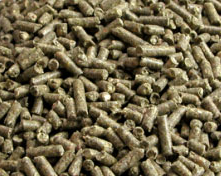
Description: Alfalfa is a type of hey. it is dried and compressed into pellets that are often used as rabbit food.
Benefits: natural plant, digestible by plant eating reptiles
Issues: harbors bacteria, will mold quickly when it gets wet. soft and mobile surface can be hard to walk on by some lizards causing leg problems.
Benefits: natural plant, digestible by plant eating reptiles
Issues: harbors bacteria, will mold quickly when it gets wet. soft and mobile surface can be hard to walk on by some lizards causing leg problems.
ASPEN CHIPS

what it is: Shaved Aspen wood. usually used for rodents.
Benefits: natural, cheap, very common and easy to obtain
Issues: can harbor bacteria, crickets can hide in it, not easily digestible, does not hold moisture
chards very sharp
Benefits: natural, cheap, very common and easy to obtain
Issues: can harbor bacteria, crickets can hide in it, not easily digestible, does not hold moisture
chards very sharp
ASPEN SHAVINGS

what it is: Shaved Aspen wood. usually used for rodents.
Benefits: natural, cheap, very common and easy to obtain
Issues: can harbor bacteria, crickets can hide in it, not easily digestible, does not hold moisture
Benefits: natural, cheap, very common and easy to obtain
Issues: can harbor bacteria, crickets can hide in it, not easily digestible, does not hold moisture
CANNABIS/HEMP BEDDING
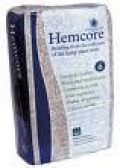
pros:
- can be digested in small amounts
- will hold humidity quite well
- can be quite easy to spot clean
- cheap
- comes in compressed blocks which are ideal for storage
- if large amounts are ingested can cause impaction
- unnatural
- an harbour bacteria crickets can hide amongst it
COCO FIBER (COIR)
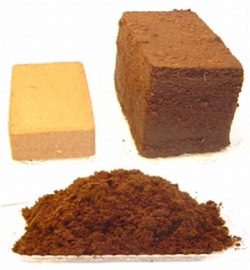
what it is: Cocofiber, or Coir, is the hairy husk of a coconut.
Benefits: natural, retains moisture thus helping to increase humidity, resists mold growth, small amounts can be digested, plants can be grown in it, comes in compressed blocks which are easy to store, can easily be mixed with other substrates to help increase their humidity retaining abilities.
Issues: can harbor bacteria, not easy to clean. if it completely dries out, it is hard to get it to absorb water again and will float on top of it.
*** Renewable green source
Benefits: natural, retains moisture thus helping to increase humidity, resists mold growth, small amounts can be digested, plants can be grown in it, comes in compressed blocks which are easy to store, can easily be mixed with other substrates to help increase their humidity retaining abilities.
Issues: can harbor bacteria, not easy to clean. if it completely dries out, it is hard to get it to absorb water again and will float on top of it.
*** Renewable green source
COCONUT HUSK CHIPS
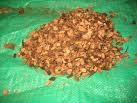
Will mold very easily if gotten wet.
*** Renewable green resource
*** Renewable green resource
CRUSHED CORNCOB
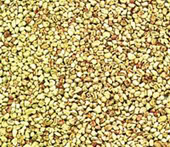
pros:
- can look nice
- quite cheap
- easy to spot clean
- higher impaction risk than other substrates
- unnatural
- can harbour bacteria
*** Renewable green resource
CYPRESS MULCH
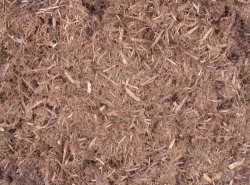
what it is: mulch made out of ground up cypress wood
Benefits: can look nice, natural, holds moisture, cypress doesn't rot as easily as other woods and is naturally bug resistant.
Issues: can harbor bacteria, not easily digestible. can be hard to find.
Benefits: can look nice, natural, holds moisture, cypress doesn't rot as easily as other woods and is naturally bug resistant.
Issues: can harbor bacteria, not easily digestible. can be hard to find.
DOUGLAS FIR
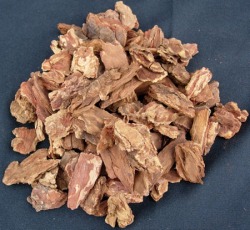
what it is: Chopped up bark of the Douglas Fir tree.
Benefits: can look nice, natural, holds some moisture, cheap, large pieces can't be eaten easily
Issues: can harbor bacteria, can rot, can get moldy, crickets can hide in it, not easily digestible.
Benefits: can look nice, natural, holds some moisture, cheap, large pieces can't be eaten easily
Issues: can harbor bacteria, can rot, can get moldy, crickets can hide in it, not easily digestible.
ECO EARTH
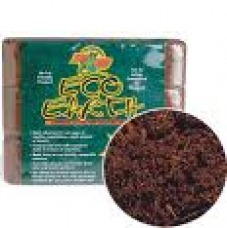
pros:
- naturalistic
- plants can be grown in it
- holds humidity well
- good for false bottom vivs and bio active vivs
- small amounts may be digested so is quite safe impaction wise
- comes in small blocks making it ideal for storage
- looks nice
- is quite cheap
- can be effectivley mixed with other substrates such as orchid bark, moss or even sand to make it more natural
- cushions landings of inhabitants
- theres still an impaction risk
- may become waterlogged if not used with a false bottom or layer of leca(lightly expanded clay aggregate)
- can harbour bacteria
- it doesnt hold burrows very well
MILLET/SEED SUBSTRATE (URO'S)

Many recommend a millet seed substrate for Uromastyx. It can be mixed with other small seed, no sunflower seeds. It is edible. Inexpensive.
Can harbour bacteria.
Can harbour bacteria.
ORCHID BARK
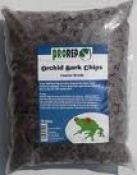
PEAT MOSS

~ NON SUSTAINABLE RESOURCE
- Pros; - Retains water and holds humidity well
- Comes in expanding blocks
- Easy to store
- A good lay box substrate
- If injested in small amounts it can be passed
Cons - Gives off a strong odour if used on its own
- Should be used with another substrate (IE eco-earth/coco-fibre)
- Feeders can hide in it.
- Pros; - Retains water and holds humidity well
- Comes in expanding blocks
- Easy to store
- A good lay box substrate
- If injested in small amounts it can be passed
Cons - Gives off a strong odour if used on its own
- Should be used with another substrate (IE eco-earth/coco-fibre)
- Feeders can hide in it.
SPAGNUM MOSS MILLED
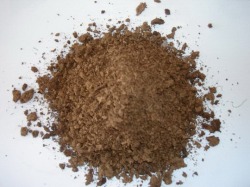
what it is: sphagnum moss that has been dried and ground up to make a fine mulch that is a lot like soil. in my experiences you should mix this with other substrates for best results
Benefits: natural, retains moisture thus helping to increase humidity, can easily be mixed with other substrates to help increase their humidity retaining abilities.
Issues: very dusty when dry, can be sticky and muddy when wet. not easy to clean. if it completely dries out, it is hard to get it to absorb water again and will float on top of it.
Possible Health Concerns: Particle substrates have a risk of impaction if a lot is eaten
Benefits: natural, retains moisture thus helping to increase humidity, can easily be mixed with other substrates to help increase their humidity retaining abilities.
Issues: very dusty when dry, can be sticky and muddy when wet. not easy to clean. if it completely dries out, it is hard to get it to absorb water again and will float on top of it.
Possible Health Concerns: Particle substrates have a risk of impaction if a lot is eaten
SPAGNUM MOSS
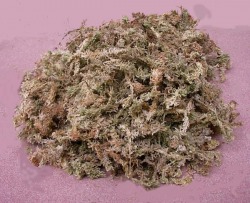
what it is: pieces of dried/wet dead sphagnum moss
Benefits: holds humidity very well, natural plant, comes in compact blocks that are easy to store, good in humid hides for shedding reptiles, cheap
Issues: can harbor pathogens
Possible Health Concerns: Particle substrates have a risk of impaction if a lot is eaten
Benefits: holds humidity very well, natural plant, comes in compact blocks that are easy to store, good in humid hides for shedding reptiles, cheap
Issues: can harbor pathogens
Possible Health Concerns: Particle substrates have a risk of impaction if a lot is eaten
SPANISH MOSS
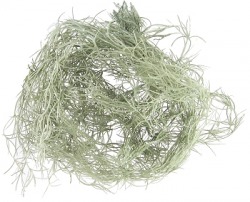
what it is: pieces of dried/wet dead spanish moss
Benefits: holds humidity very well, natural plant, comes in compact blocks that are easy to store, good in humid hides for shedding reptiles, cheap
Issues: can harbor pathogens
Possible Health Concerns: Particle substrates have a risk of impaction if a lot is eaten
Benefits: holds humidity very well, natural plant, comes in compact blocks that are easy to store, good in humid hides for shedding reptiles, cheap
Issues: can harbor pathogens
Possible Health Concerns: Particle substrates have a risk of impaction if a lot is eaten
WALNUT ~ CRUSHED

Description: Dried and crushed up walnut shells.
Benefits: natural plant material, easy to spot clean
Issues: harbors bacteria, rots and gets moldy fast when it gets wet.
***Higher impaction risk then other materials due to the large rough pieces that can't be digested
Benefits: natural plant material, easy to spot clean
Issues: harbors bacteria, rots and gets moldy fast when it gets wet.
***Higher impaction risk then other materials due to the large rough pieces that can't be digested
Natural Bedding
EXCAVATOR CLAY
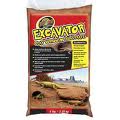
pros:
- excellent for digging/burrowing species
- low impaction risk
- looks nice
- can be a more natural substrate to species such a leopard geckos or bearded dragons that live of hardpan in the wild
- May stain skin or decor
- not very good when wet
- may harbour pathogens
- doesnt conduct heat very well so heatmats are useless meaning species such as leopard geckos which heatmats are usualy used have to be heated from above by a ceramic or the likes (which isnt a particuarly bad thing and is more natural but is inconvieneint to some keepers)
- It is quite exspensive
EXPANDED CLAY
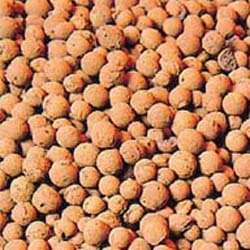
Description: natural clay that is baked in round pellets. usually used in hydroponics or vivariums as a drainage layer under normal substrate
Benefits: wont rot or breakdown, natural, easy to clean and sterilize, retains moisture
Issues: crickets can hide in it
Possible Health Concerns: risk of impaction depends on the size of the clay balls used. larger clay balls = harder to eat.
Benefits: wont rot or breakdown, natural, easy to clean and sterilize, retains moisture
Issues: crickets can hide in it
Possible Health Concerns: risk of impaction depends on the size of the clay balls used. larger clay balls = harder to eat.
GRAVEL
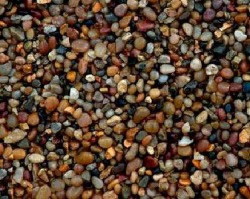
Description: smooth rounded stone pieces
Benefits: easy to clean? and sterilize. can look nice.
Issues: crickets can hide in it. doesn't hold moisture
Possible Health Concerns: risk of impaction depends on the size of the gravel used. larger gravel = harder to eat. Higher risk of impaction than other choices.
Benefits: easy to clean? and sterilize. can look nice.
Issues: crickets can hide in it. doesn't hold moisture
Possible Health Concerns: risk of impaction depends on the size of the gravel used. larger gravel = harder to eat. Higher risk of impaction than other choices.
SAND~BEACH
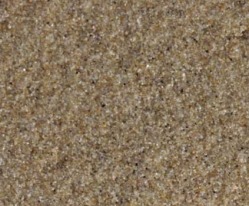
Description: Beach sand is a smooth large grain sand made of many types of stone and minerals.
Benefits: more realistic then play sand, smoother particles are gentler on the skin, good for digging species, easy to clean
Issues: not easy to sterilize, bacteria can build up in the particles.
Possible Health Concerns: Particle substrates have a risk of impaction if a lot is eaten. May cause problems with reptiles who may pick up grains with their tongues when lick-smelling or whose hemipenes or cloacal tissue are everted during defecation
Benefits: more realistic then play sand, smoother particles are gentler on the skin, good for digging species, easy to clean
Issues: not easy to sterilize, bacteria can build up in the particles.
Possible Health Concerns: Particle substrates have a risk of impaction if a lot is eaten. May cause problems with reptiles who may pick up grains with their tongues when lick-smelling or whose hemipenes or cloacal tissue are everted during defecation
SAND~BOX SAND
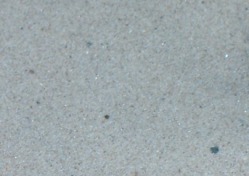
Description: Sandbox sand (or play sand) is a course fine sand often made of quartz stone or calcium carbonate.
Benefits: natural, looks nice in desert setups, good for digging species, easy to clean
Issues: not easy to sterilize, bacteria can build up in it.
Possible Health Concerns: Particle substrates have a risk of impaction if a lot is eaten. May cause problems with reptiles who may pick up grains with their tongues when lick-smelling or whose hemipenes or cloacal tissue are everted during defecation
Benefits: natural, looks nice in desert setups, good for digging species, easy to clean
Issues: not easy to sterilize, bacteria can build up in it.
Possible Health Concerns: Particle substrates have a risk of impaction if a lot is eaten. May cause problems with reptiles who may pick up grains with their tongues when lick-smelling or whose hemipenes or cloacal tissue are everted during defecation
SLATE
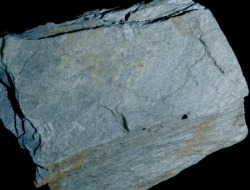
Description: Pieces of slate broken up to fit in the bottom of the enclosure.
Benefits: easy to clean and sterilize, good heat conductors, pretty much last forever, cheap in the long run, look natural
Issues: may be expensive to buy, hard surfaces don't cushion landings, if glued or tightly fitting in the enclosure they are hard to get back out
Possible Health Concerns:
Benefits: easy to clean and sterilize, good heat conductors, pretty much last forever, cheap in the long run, look natural
Issues: may be expensive to buy, hard surfaces don't cushion landings, if glued or tightly fitting in the enclosure they are hard to get back out
Possible Health Concerns:
SOIL
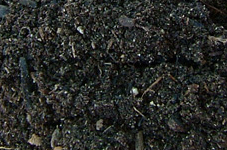
Description: garden/top soil
Benefits: natural, holds moisture, easy to spot clean, cheap, allows plant growth and supports microfauna/microflora which can break down waste
Issues: harbors bacteria, can harbor parasites or other bugs, can be muddy if too wet.
Possible Health Concerns: be sure ot get it from a place where no fertilizers, pesticides, or other chemicals were used on it. If you buy soil from a store, make sure it does not contain pesticides or fertilizers.
Benefits: natural, holds moisture, easy to spot clean, cheap, allows plant growth and supports microfauna/microflora which can break down waste
Issues: harbors bacteria, can harbor parasites or other bugs, can be muddy if too wet.
Possible Health Concerns: be sure ot get it from a place where no fertilizers, pesticides, or other chemicals were used on it. If you buy soil from a store, make sure it does not contain pesticides or fertilizers.
TILE

Pros:
- excellent for digging/burrowing species
- low impaction risk
- looks nice
- can be a more natural substrate to species such a leopard geckos or bearded dragons that live of hardpan in the wild
- May stain skin or decor
- not very good when wet
- may harbour pathogens
- doesnt conduct heat very well so heatmats are useless meaning species such as leopard geckos which heatmats are usualy used have to be heated from above by a ceramic or the likes (which isnt a particuarly bad thing and is more natural but is inconvieneint to some keepers)
- It is quite exspensive
It edges lift, snakes have been known to become stuck to the adhesive
Organic Manufactured Bedding
PAPERTOWEL
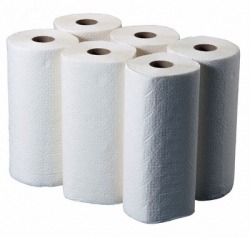
(kitchen roll,wall paper etc):
pros:
pros:
- very low impaction risk
- easy to spot clean
- easy to clean(disposable)
- cheap
- can cause impaction(only if is tron up by claws etc it verys unlikely that it happens though)
- can harbour bacteria
- needs replacing reguarly
- looks unnatural
Snakes have been known to swallow whole sheets. Have survived the incidents.
NEWSPAPER
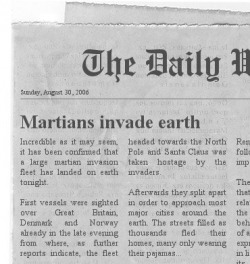
Description: old newspapers have been used in animal enclosures for dozens of years. currently, most newspaper ink is soy based
Benefits: cheap, easy to clean (disposable)
Issues: not natural, needs replacing often, can harbor bacteria and get moldy, hard surfaces don't cushion landings, ink can possibly discolor reptiles skin, reptiles that smell with their tongue may get overwhelmed by the scent of the newspaper ink. reptile might get bored of reading articles
Possible Health Concerns:
Benefits: cheap, easy to clean (disposable)
Issues: not natural, needs replacing often, can harbor bacteria and get moldy, hard surfaces don't cushion landings, ink can possibly discolor reptiles skin, reptiles that smell with their tongue may get overwhelmed by the scent of the newspaper ink. reptile might get bored of reading articles
Possible Health Concerns:
NEWSPAPER PELLETS
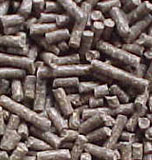
Description: old newspapers recycled and compressed in to pellets
Benefits: cheap, easy to spot clean
Issues: not natural, can harbor bacteria and get moldy, expands when wet, if ingested will cause problems with digestive tracts.
Benefits: cheap, easy to spot clean
Issues: not natural, can harbor bacteria and get moldy, expands when wet, if ingested will cause problems with digestive tracts.
NEWSPAPER SHAVINGS
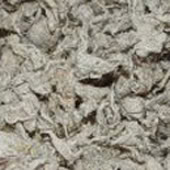
Description: shredded, fluffed up recycled paper. usually used for rodents
Benefits: cheap, easy to clean (disposable)
Issues: can get moldy when wet, doesn't retain moisture well, crickets can hide in it, harbors bacteria
Benefits: cheap, easy to clean (disposable)
Issues: can get moldy when wet, doesn't retain moisture well, crickets can hide in it, harbors bacteria
Artificial Bedding
CLOTH TOWELS
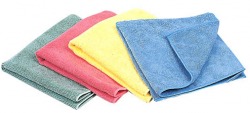
Description: cotton or nylon towels.
Benefits: cheap, last a long time, easy to spot clean, easy to wash, can look nice
Issues: unnatural, harbors bacteria if not cleaned regularly.
Possible Health Concerns: small lizards can get their toes or nails stuck in the fibers which can cause injury. Larger reptiles may attempt to eat it whole.
Benefits: cheap, last a long time, easy to spot clean, easy to wash, can look nice
Issues: unnatural, harbors bacteria if not cleaned regularly.
Possible Health Concerns: small lizards can get their toes or nails stuck in the fibers which can cause injury. Larger reptiles may attempt to eat it whole.
LINOLEUM
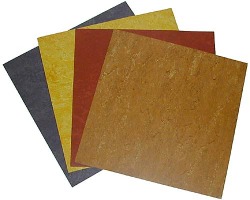
Description: plastic tiles with an adhesive back so you can stick them to the bottom of an enclosure, or could put them on a large piece of plastic to make an easily removable mat.
Benefits: easy to clean, doesn't harbor bacteria, usually cheap, usually lasts a long time
Issues: most looks unnatural, doesn't cushion landings, smooth surface might make it difficult for some species to grip which may cause leg issues
Possible Health Concerns: do not put reptiles in the enclosure until any fumes from the adhesive are gone. Any lino or glued down item used for substreate poses a high risk of poisoning your reptile as many adhesives though undetectable by us will continue to release fumes under heat or with moisture for years.
If edges separate Snakes have been known to become stuck to the adhesive. Tile has been known to cause leg issues with lizards.
Benefits: easy to clean, doesn't harbor bacteria, usually cheap, usually lasts a long time
Issues: most looks unnatural, doesn't cushion landings, smooth surface might make it difficult for some species to grip which may cause leg issues
Possible Health Concerns: do not put reptiles in the enclosure until any fumes from the adhesive are gone. Any lino or glued down item used for substreate poses a high risk of poisoning your reptile as many adhesives though undetectable by us will continue to release fumes under heat or with moisture for years.
If edges separate Snakes have been known to become stuck to the adhesive. Tile has been known to cause leg issues with lizards.
REPTI ~ CARPET
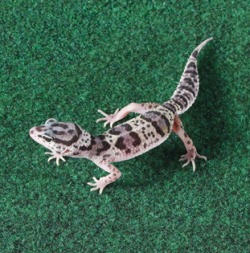
pros:
- cheap
- lasts a long time
- easy to spot clean
- easy to clean as it can be soaked and reused
- looks nice
- unnatural
- claws/toes/teeth can get stuck in it and be damaged or torn off
- harbours bacteria if not cleaned regularly
feeders able to hide under the carpet
NOTE: Often astroturf has been used as an alternative. This has caused reptiles to catch their toes and teeth. The newer repticarpet does not have this issue and has been treated with enzymes that will help with odor.
SHELF LINER
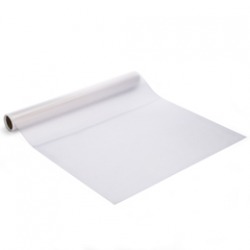
Description: roll of plastic or rubber with an adhesive back so you can stick them to the bottom of an enclosure, or could put them on a large piece of plastic to make an easily removable mat.
Benefits: easy to clean, doesn't harbor bacteria, usually cheap, usually lasts a long time, available in many textures
Issues: most looks unnatural, doesn't cushion landings, using liner with a smooth surface might make it difficult for some species to grip which may cause leg issues
Possible Health Concerns: do not put reptiles in the enclosure until any fumes from the adhesive are gone
Benefits: easy to clean, doesn't harbor bacteria, usually cheap, usually lasts a long time, available in many textures
Issues: most looks unnatural, doesn't cushion landings, using liner with a smooth surface might make it difficult for some species to grip which may cause leg issues
Possible Health Concerns: do not put reptiles in the enclosure until any fumes from the adhesive are gone
Dangerous Bedding
CALCI SAND
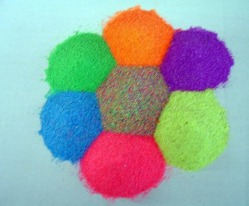
pros:
- looks nice
- easy to spot clean
- encourages lizards to eat it due having calcium in it
- contrary to what it says its not digestable so is likely to cause impactionCalci Sand - Not Digestable, Can Be Fatal £0 - Pet Zoo Online Reptile Shop & Exotic Pet Store
- can harbour bacteria
CRUSHED SEASHELL
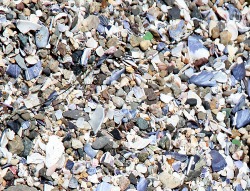
Description: crushed oyster and mussel shells, normally used for hermit crabs or fish tanks
Benefits: natural. can look nice. wont rot. easy to clean
Issues: sharp edges can injure delicate skinned reptiles. can't be digested. doesn't hold moisture
Possible Health Concerns: CAN BE DANGEROUS. Since shells are made out of calcium, reptiles will try to eat them on purpose, but since they can't be digested, there is a very high risk of impaction and death.
Benefits: natural. can look nice. wont rot. easy to clean
Issues: sharp edges can injure delicate skinned reptiles. can't be digested. doesn't hold moisture
Possible Health Concerns: CAN BE DANGEROUS. Since shells are made out of calcium, reptiles will try to eat them on purpose, but since they can't be digested, there is a very high risk of impaction and death.
CEDAR
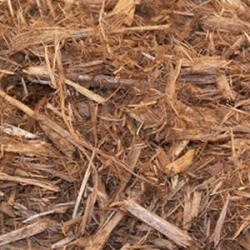
Ceder and other softwood Pines
Description: chopped up Ceder or other softwood Pine.
Benefits: resists bugs, cheap, can look nice, smells nice
Issues: not easy to clean, harbors bacteria
Possible Health Concerns: VERY DANGEROUS. The phenols that makes pine and ceder smell good is also what makes it very toxic to small animals and ALL reptiles. These compounds cause constant irritation to the nasal passages, throat, and lungs of small animals giving bacteria an easy opening, thus commonly causing pneumonia. Phenols also affect organs such as the liver and kidneys, because these organs are responsible for filtering toxins out of the body. When presented with a large amount of toxins over time, they are unable to filter it all out and begin to fail. An animal with a damaged liver will have a depressed immune system, which can lead to other medical conditions. Besides using it for substrate, it is also bad to use pine and ceder in cage decoration, or even in construction of the enclosure.
Description: chopped up Ceder or other softwood Pine.
Benefits: resists bugs, cheap, can look nice, smells nice
Issues: not easy to clean, harbors bacteria
Possible Health Concerns: VERY DANGEROUS. The phenols that makes pine and ceder smell good is also what makes it very toxic to small animals and ALL reptiles. These compounds cause constant irritation to the nasal passages, throat, and lungs of small animals giving bacteria an easy opening, thus commonly causing pneumonia. Phenols also affect organs such as the liver and kidneys, because these organs are responsible for filtering toxins out of the body. When presented with a large amount of toxins over time, they are unable to filter it all out and begin to fail. An animal with a damaged liver will have a depressed immune system, which can lead to other medical conditions. Besides using it for substrate, it is also bad to use pine and ceder in cage decoration, or even in construction of the enclosure.
Bedding Mixes
SLAYERS BIO SAVANNAH MONITOR MIX

Slayer's Bioactive Soil
Description: Generally I start off with a 50/50 top soil/beach sand mix then I tweak it, depending on how the animal and soil behaves (If it drys too fast I add more soil to retain moisture. If it doesn't hold when dug in, I add more sand for stability and structure) I also put in lots of leaf litTer to break down in the cage adding many healthY bacteria to the setup that helps break down waste. Then all that's needed is some earth worms and pill bugs and the bio active soil is complete
Benefits: natural, holds moisture, supports plants and microfauna/microflora that can break down waste
Issues: can harbor harmful bugs and bacteria
Possible Health Concerns: Particle substrates have a risk of impaction if a lot is eaten
Description: Generally I start off with a 50/50 top soil/beach sand mix then I tweak it, depending on how the animal and soil behaves (If it drys too fast I add more soil to retain moisture. If it doesn't hold when dug in, I add more sand for stability and structure) I also put in lots of leaf litTer to break down in the cage adding many healthY bacteria to the setup that helps break down waste. Then all that's needed is some earth worms and pill bugs and the bio active soil is complete
Benefits: natural, holds moisture, supports plants and microfauna/microflora that can break down waste
Issues: can harbor harmful bugs and bacteria
Possible Health Concerns: Particle substrates have a risk of impaction if a lot is eaten
ZAROBA'S DART FROG MIXTURE
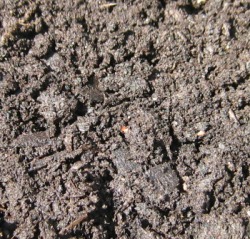
Description: a mix of 25% organic topsoil, 25% hardwood mulch, and 50% milled sphagnum moss. all of these items can be bought at most stores that sell garden supplies. when using it in a vivarium, i had also put a layer of cocofiber on top of the soil to make it look nicer.
Benefits: organic, natural, cheap, holds moisture well, supports live plants and microfauna/microflora which break down waste. gives off a 'damp forest floor' smell.
Issues: can't easily make just a small amount of it since the ingredients come in big bags. gives off a 'damp forest floor' smell, heavy when wet, can be messy to make, milled sphagnum is very dusty when dry. can harbor harmful bugs and bacteria.
Possible Health Concerns: Particle substrates have a risk of impaction if a lot is eaten
Benefits: organic, natural, cheap, holds moisture well, supports live plants and microfauna/microflora which break down waste. gives off a 'damp forest floor' smell.
Issues: can't easily make just a small amount of it since the ingredients come in big bags. gives off a 'damp forest floor' smell, heavy when wet, can be messy to make, milled sphagnum is very dusty when dry. can harbor harmful bugs and bacteria.
Possible Health Concerns: Particle substrates have a risk of impaction if a lot is eaten
SUBSTRATES:
http://www.reptilesdownunder.com/reptile/reptilesAsPets/enclosure/substrate/
http://www.anapsid.org/substrates2.html
http://www.hagen.com/usa/reptiles/info_sheet.cfm?CAT=31&INFO=32
With appreciation to the many participating in building this site.
HOME
Share |
